Unreal Engine: OptiTrack Live Link Plugin
Overview
This page provides instructions on how to use the OptiTrack Unreal Engine Live Link plugin. The plugin communicates with Unreal's built-in Live Link system by providing a Live Link source for receiving tracking data streamed from Motive. This plugin can be used for controlling cameras and objects in virtual production applications. When needed, the OptiTrack Unreal Engine Plugin can also be alongside this plugin. For a specific guide to InCamera VFX (i.e. LED Wall Virtual Production) please see this wiki page Unreal Engine: OptiTrack InCamera VFX.
Setup
1. [Motive] Setup rigid body streaming in Motive.
Get Motive streaming with at least one rigid body or Skeleton asset. Make sure the Streaming settings are configured correctly, and the asset is active under the Assets pane.
2. [UE] Install the OptiTrack plugins in Unreal Engine (UE).
You can install the OptiTrack Unreal Engine plugin by putting the plugin files into one of the following directories:
A global engine plugin can be placed in
C:\Program Files\Epic Games\[Engine Version]\Engine\PluginsA project-specific plugin can be placed in
[Project Directory]\Plugins
3. [UE] Enable the plugins in UE project.
Go to Edit → Plugins and enable two of the required plugins. First one is the OptiTrack - Live Link plugin under Installed group, and the second one is the built-in Live Link plugin under Built-In group.


4. [UE] Open the LiveLink pane
Open the LiveLink pane from Window → Virtual Production → Live Link in the toolbar.
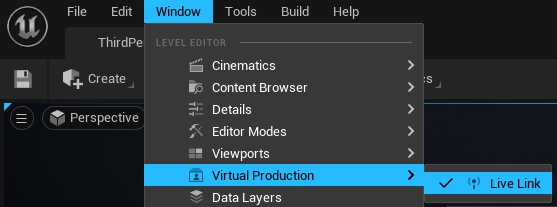
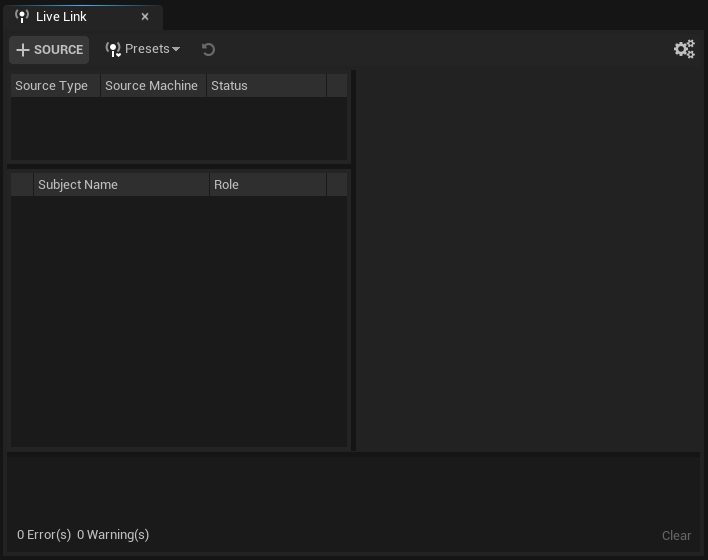
5. [UE] Configure and create a new OptiTrack source
In the LiveLink pane under Source options, go to the OptiTrack Source menu and configure the proper connection settings and click Create. Please make sure to use matching network settings configured from the Streaming pane in Motive.
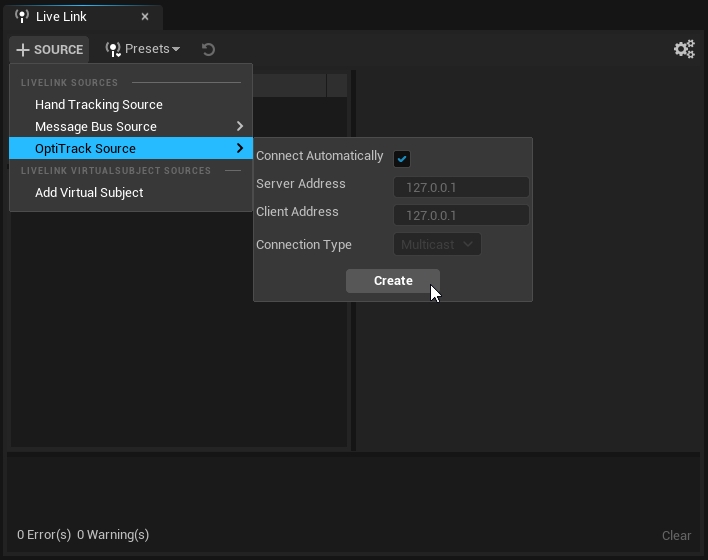
6. [UE] Check the Connection.
If the streaming settings are correct and the connection to Motive server is successful, then the plugin will list out all of the detected assets. They should have green dots next to them indicating that the corresponding asset has been created and is receiving data. If the dots are yellow, then it means that the client has stopped receiving data. In this case, check if Motive is still tracking or if there is a connection error.
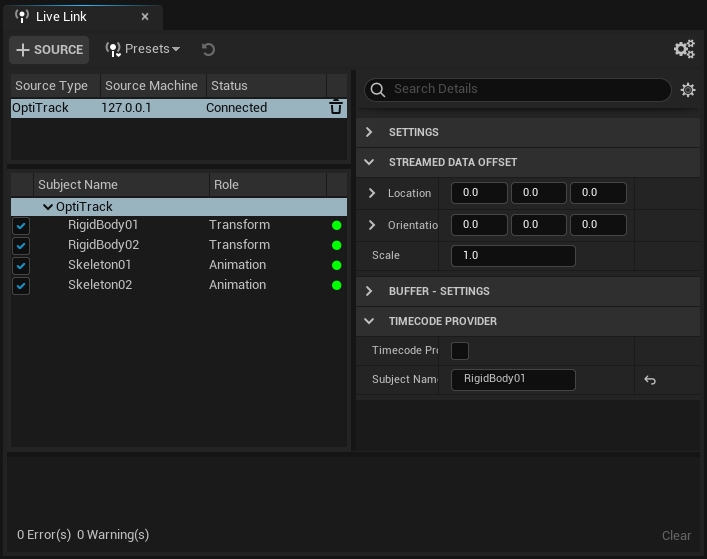
Using the Plugin
Static Meshes or Camera Actors
1. Add the camera object or static mesh object that you wish to move
Add a camera actor from the Place Actors pane or a static mesh from the project into your scene. For the static meshes, make sure their Mobility setting is set to Movable under the Transform properties.

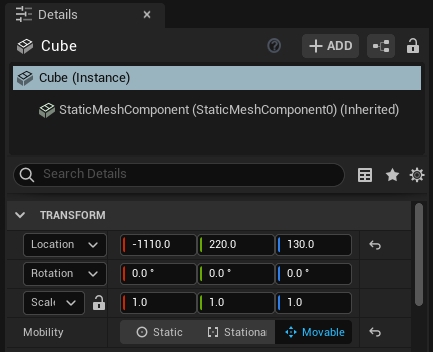
2. Add a LiveLinkController Component
Select an actor you want to animate. In the Details tab select your "actor" (Instance). In the search bar, type in Live Link. Then click on the Live Link Controller from the populated list.
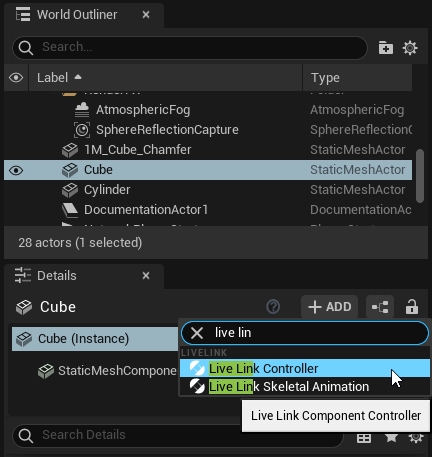
3. Select the target rigid body
Under the Live Link properties in the Details tab click in the Subject Representation box and select the target rigid body.
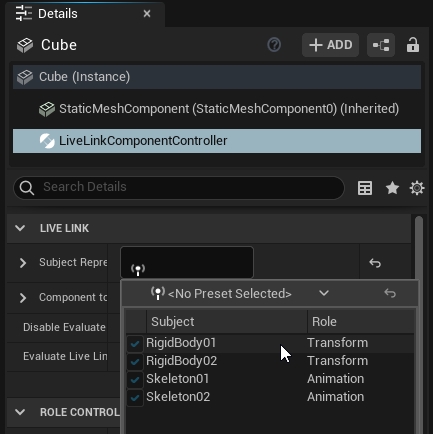
4. Check
Once the target rigid body is selected, each object with the Live Link Controller component attached and configured will be animated in the scene.
Timecode Setup
When the camera system is synchronized to another master sync device and a timecode signal is feeding into eSync 2, then the received timecode can be used in UE project through the plugin.
1. Set Timecode Provider under project settings
From Edit → Project Settings, search timecode and under Engine - General settings, you should find settings for the timecode. Here, set the the Timecode Provider to LiveLinkTimeCodeProvider.
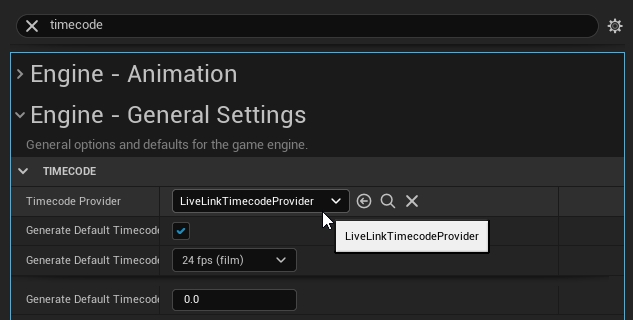
2. Set OptiTrack source in the Live Link pane as the Timecode Provider
Open the Live Link pane, and select the OptiTrack subject that we created when first setting up the plugin connection. Then, under its properties, check the Timecode Provider box.
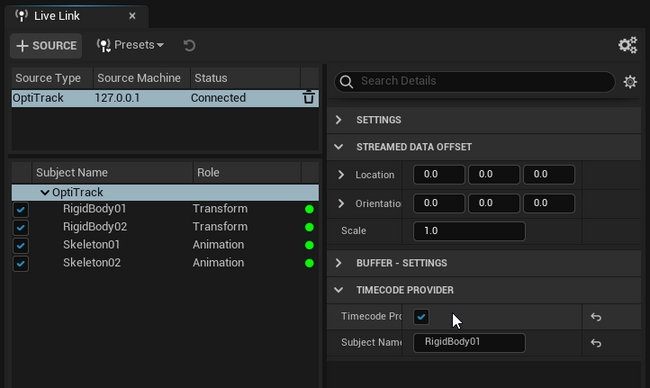
3. Check
The timecode from Motive should now be seen in the Take Recorder pane. Take Recorder pane can be found under Window → Cinematics → Take Recorder in the toolbar.
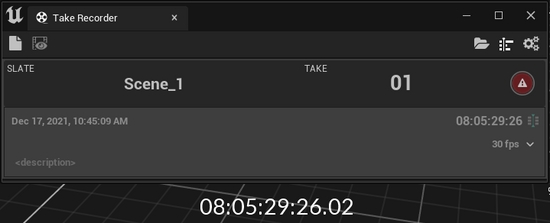
Skeletons
1. Create a new Animation Blueprint
Right click the mesh you would like to use and select "Create > Anim Blueprint"

2. Name and Open the Animation Blueprint
Name the animation blueprint something appropriate, then double click it to open the blueprint.

3. Hook up your Blueprint
Create a "Live Link Pose" component and connect it to the "Output Pose". Assign the "Live Link Subject Name" to the Skeleton that you would like to use.

Change the "Retarget Asset" property in the Details pane of the blueprint editor to "OptiTrackLiveLinkRetarget"
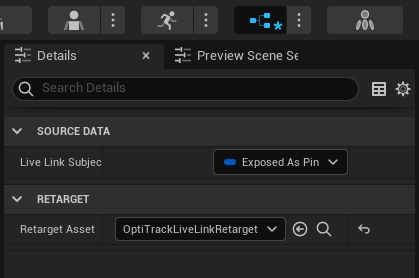
4. Getting the Skeleton to Animate
To animate the Skeleton in real time click the Animation Blueprint from earlier. In the Details pane under the skelteonLive Link Skeleton Animation". After you add that component the mesh should start animating.
To animate the Skeleton in a game, just press the play button. Adding the "Live Link Skeleton Animation" object is not necessary to animate in play mode.
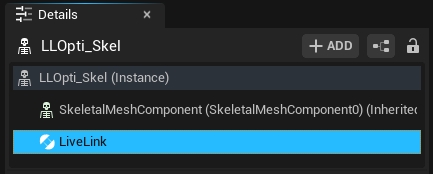
5. OptiTrack Live Link Display
In order to see the debug skeleton overlay from Motive, you can enable the OptiTrack Live Link Display. From the Quick Add dropdown from the toolbar, you can select OptiTrack Live Link Display. This will appear in the Outliner tab and you can change any settings in its Details tab as needed.
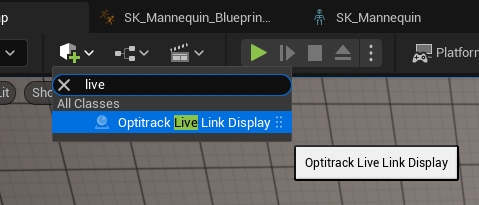
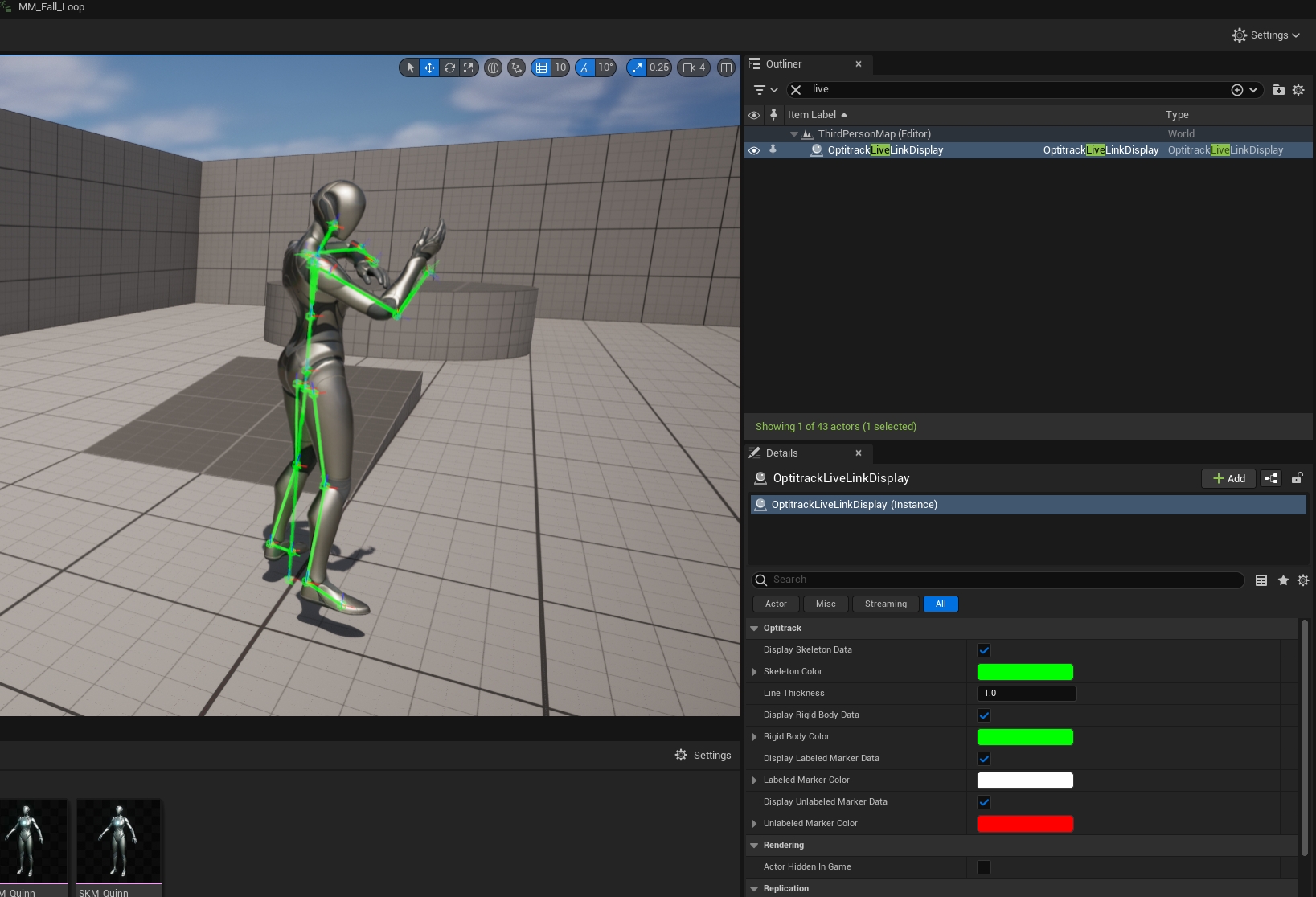
Debugging Note
If the retargeting doesn't match the mesh correctly, then you can create a new OptiTrackLiveLinkRetarget blueprint from scratch and modify the bone mapping names.
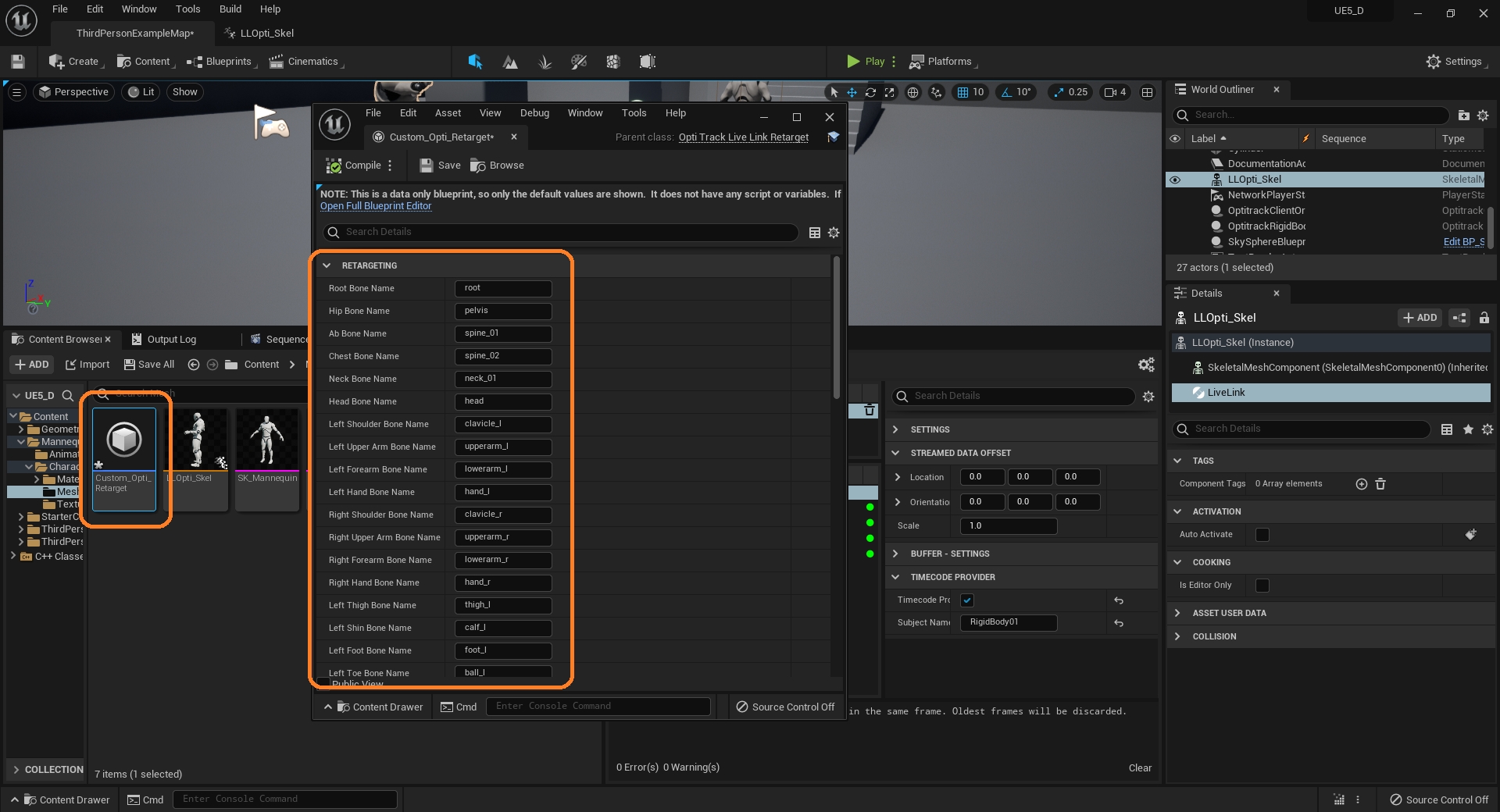
MetaHumans
Animating a MetaHuman follows basically the same steps as another Skeleton, but requires hooking into the Skeleton at a very specific location. For more information about MetaHuman setup outside of our scope, please visit Epic Games's website.
1. Find the Skeletal Mesh
Navigate to the Skeletal Mesh for your MetaHuman. This is typically located in a folder such as MetaHumans > [Name] > [Female/Male] > [Height] > [Weight] > Body. Double click the Skeletal Mesh to open the blueprint.
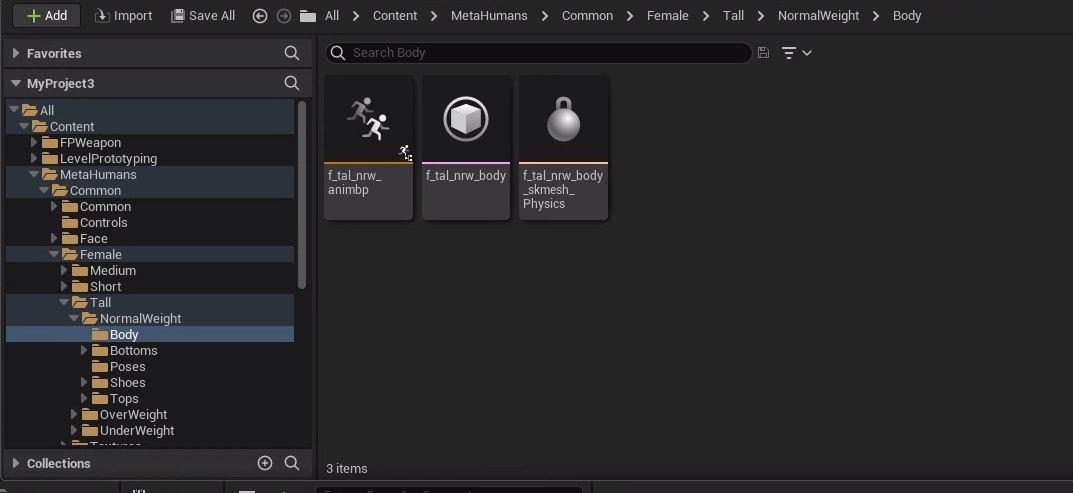
2. Open the AnimGraph Tab
Click the "Blueprint" option on the top bar of new window. In the bottom left corner navigate to My Blueprint > Animation Graphs > AnimGraph and double click.
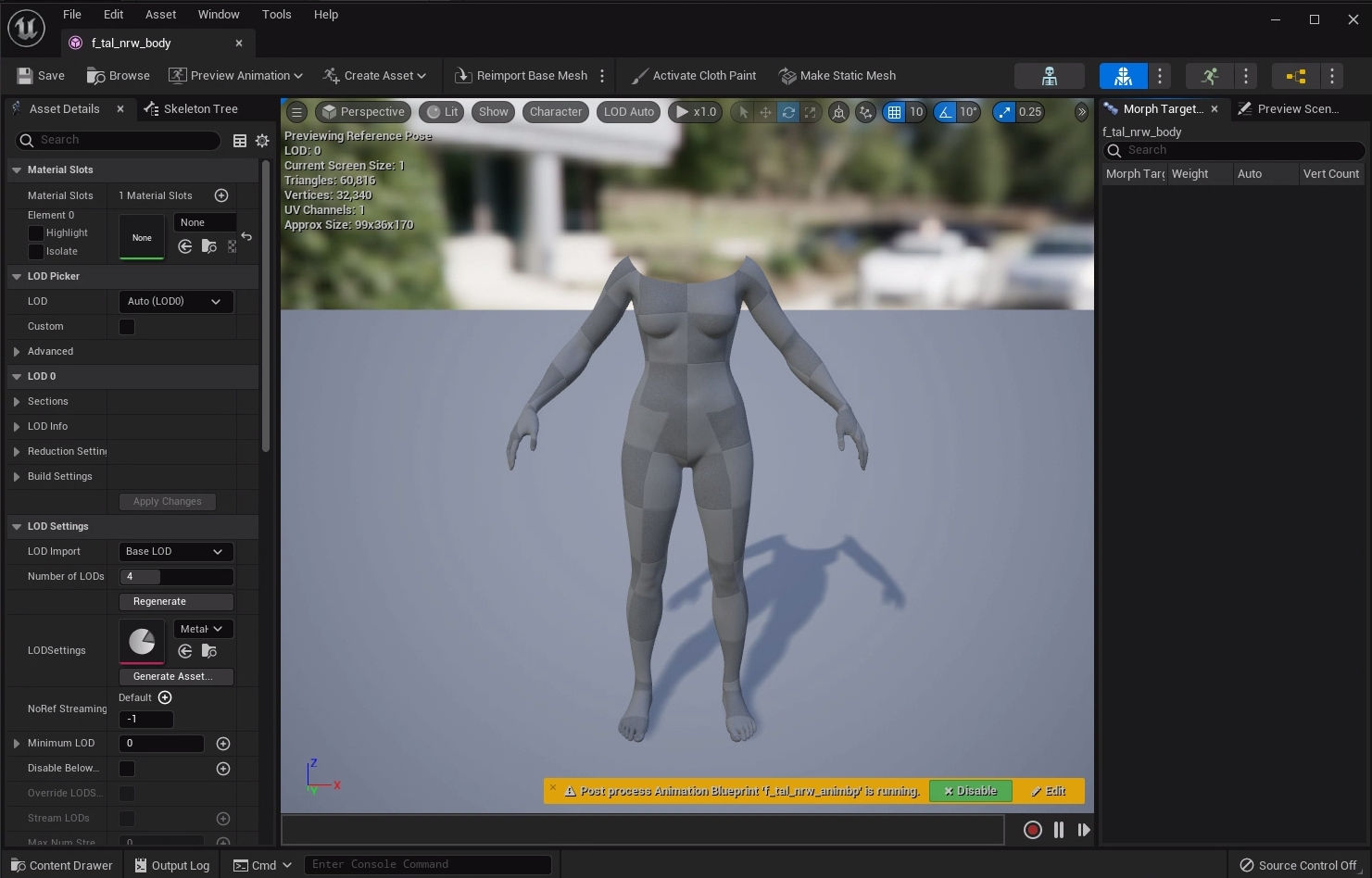
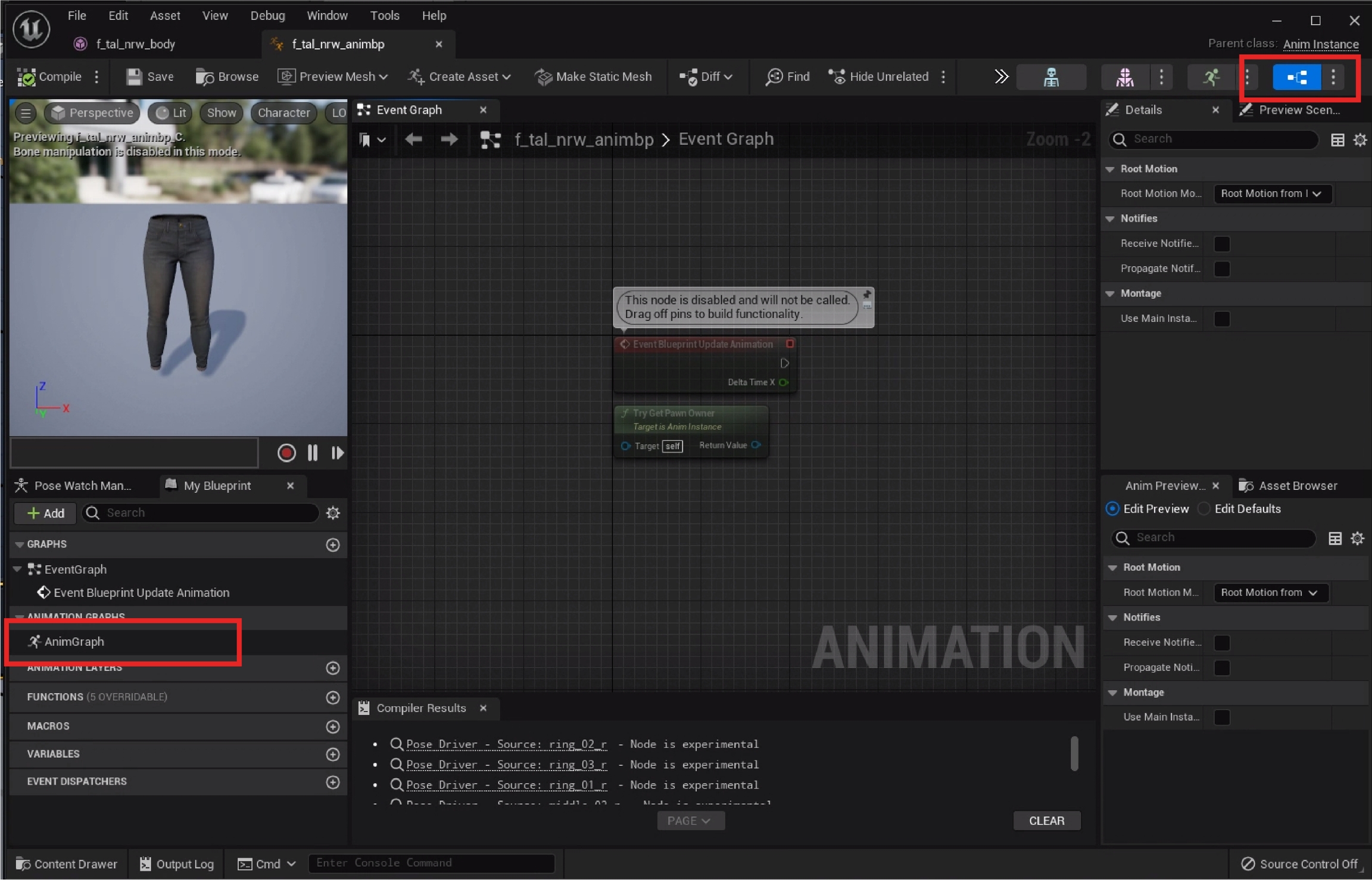
3. Hook up your Blueprint
You'll see a very complex AnimGraph already setup. Make a new Live Link Pose object like in the Skeleton creation steps. Connect the Input Pose or Control Rig to the input of the Live Link Pose. Connect the output of the Live Link Pose to the Output Pose AnimGraph object.


4. Retarget in the Details Tab
The last step in this window is to set the Retarget Asset to OptiTrackLiveLinkRetarget for the Live Link Pose node. To do this, simply click on the dropdown in the Details tab and click the dropdown under Retarget Asset and select OptiTrackLiveLinkRetarget. After it has been set, click Compile in the top left of this window. You may now close this window and move on to the next steps.
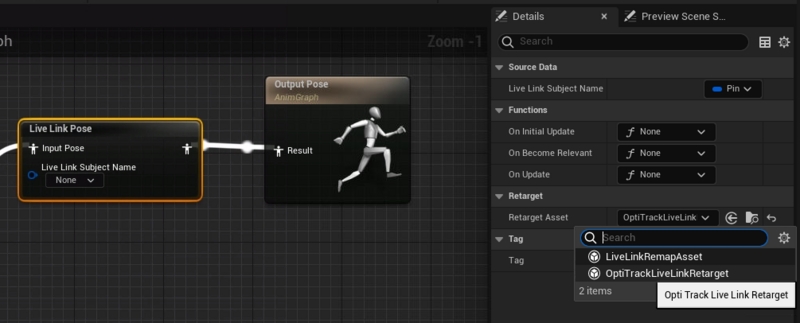
5. Level of Detail (LOD)
MetaHumans will change their Level of Detail (LOD), i.e. how complex the asset is, based on how far the camera is from the actor among other factors. In order for things to animate correctly the Forced LOD must be a minimum of 1 (default of -1). To change this setting, click on the (Instance) you wish to change in the Details tab on the main workspace window. Below the selected (Instance) select the LOD tab. From here you can change the value in the Forced LOD Model field.
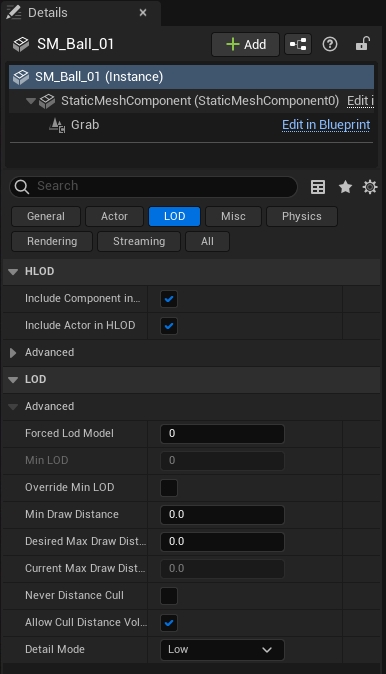
6. Animate your MetaHuman
At this point if you drag the base MetaHuman object into the scene then it will animate like other Skeletons.

Standalone Game Mode
For testing the project in standalone game mode, or when developing an nDislay application, the Live Link plugin settings must be saved out and selected as the default preset to be loaded onto the project. If this is not done, the configured settings may not get applied. After configuring the LiveLink plugin settings, save out the preset from the Live Link pane first. Then, open the Project Settings and find Live Link section in the sidebar. Here, you can select the default Live Link preset to load onto the project, as shown in the screenshot below. Once the preset is properly saved and loaded, the corresponding plugin settings will be applied to the standalone game mode.
If all the configuration is correct, the actors will get animated in the newly opened game window when playing the project in the standalone game mode.
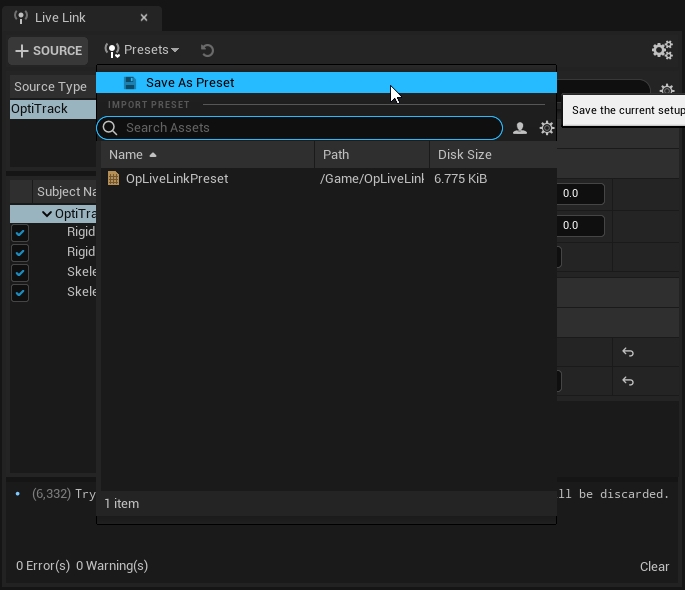


MotionBuilder Retargeting
Another path to get data into Unreal Engine is to stream data from Motive -> MotionBuilder (using the OptiTrack MotionBuilder Plugin) -> Unreal Engine (using the Live Link plugin for MotionBuilder). This has the benefit of using the Human IK (HIK) retargeting system in MotionBuilder, which will scale characters of very different sizes/dimensions better than the base Live Link plugin. More information can be found by consulting Unreal Engine's Live Link to MotionBuilder documentation.
Troubleshooting
Was this helpful?

